Caravaggio, The Calling of St. Matthew
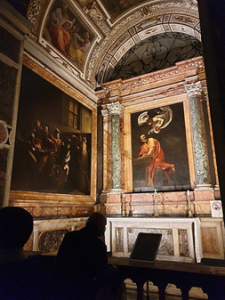
Caravaggio’s first important public commission was a series of three monumental canvases devoted to St. Matthew that he painted for the Contarelli Chapel in San Luigi dei Francesi from 1599 to 1602. Caravaggio’s style is remote from both mannerism and the High Renaissance. His naturalism is a new and radical kind. According to contemporary accounts, Caravaggio painted directly on the canvas, as had Titian, but he worked from a live model. He depicted the world he knew, so that his canvases are filled with ordinary people. They are not idealized as High Renaissance figures, not given Classical bodies, clean clothes, and perfect features. This was an entirely new conception that was raw, immediate, and palpable.
For Caravaggio, naturalism was not an end in itself but a means of conveying profoundly spiritual content. The Calling of St. Matthew shows these qualities Never before have we seen a sacred subject depicted so entirely in terms of contemporary lowlife. Matthew, the well-dressed tax collector, sits with some armed men in a common, sparse room. Two figures approach from the right. Caravaggio’s paintings have a quality of “lay Christianity” that spoke powerfully to both Catholics and Protestants.
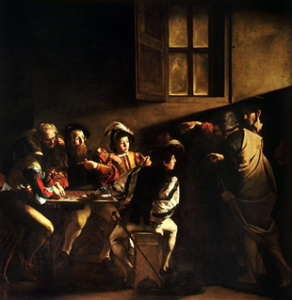
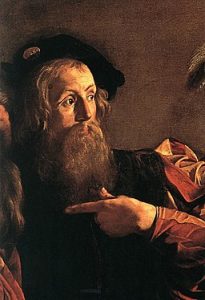
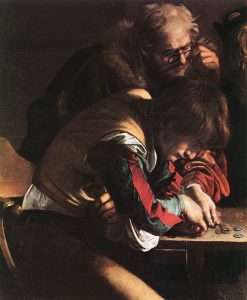
Why do we sense a religious quality in this scene and not mistake it for an everyday event? What identifies one of the figures on the right as Christ, who has come to Matthew and says, “Follow me”? It is surely not his halo, the only supernatural feature in the picture, which is a thin gold band that we might easily overlook. Our eyes fasten instead on his commanding gesture, borrowed from Michelangelo’s Adam in The Creation of Adam, which bridges the gap between the two groups of people and is echoed by Matthew who points at himself. The men at the left concentrate on the money being counted. In shadows, they are blind to the entrance of Christ – one even wears eyeglasses.
Caravaggio uses the piercing light in this scene to announce Christ’s presence, as Christ himself brought light. The strong beam of light in the dark background is known as tenebrism. Caravaggio illuminates Christ’s face and hand in the gloomy interior so that we see the moment of his calling to Matthew and witness a critical piece of religious history and personal conversion. Without this light, so natural yet so charged with meaning, the picture would lose its power to make us aware of the divine presence. Caravaggio gives direct expression to an attitude shared by certain saints of the Counter-Reformation: that the mysteries of faith are revealed not by speculation but through an inner experience that is open to all people.[1]
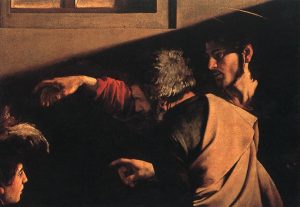
- Penelope J.E. Davies, et. al. Janson’s History of Art: The Western Tradition, (Upper Saddle River, NJ: Pearson, 2007), 662-663. ↵

